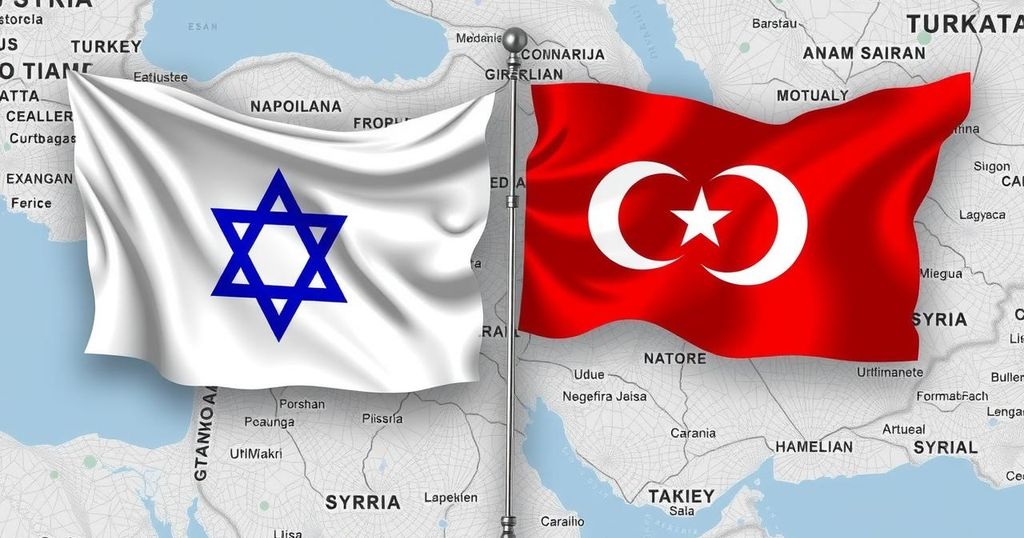Israel and Turkey’s Strategic Moves in Post-Assad Syria

Following the ousting of Bashar Assad, both Israel and Turkey are taking decisive steps to shape Syria’s future, with Israel focusing on military measures against Islamist threats and Turkey aiming to establish a buffer zone against Kurdish factions. Local sentiments in Israel-controlled Golan Heights suggest support for these actions, while Turkey seeks to assert its influence amidst the ongoing crisis.
The landscape of Syria is undergoing significant transformation following the recent overthrow of long-standing dictator Bashar Assad, with shifts in both governance and territorial borders observed. Israel swiftly increased its military presence within Syria, apprehensive about potential threats arising from the new alignment of power, particularly the emergence of Islamist factions. Prime Minister Benjamin Netanyahu articulated that Israel is committed to preventing jihadist groups from occupying the resultant power vacuum, indicating that any military operations will continue until a new Syrian administration aligns with the longstanding ceasefire agreements.
Turkey is also asserting its influence over Syria, particularly in the aftermath of Assad’s ousting, with President Recep Tayyip Erdogan prioritizing the displacement of Kurdish factions linked to longstanding separatist movements within Turkey. The Syrian National Army, a force backed by Ankara, has expanded its territorial control in northwest Syria, indicating Turkey’s intent to establish a buffer zone along its extensive border.
Regionally, the Golan Heights has become a focal point of contention. Israel’s military control has extended in these territories, providing strategic advantages in monitoring movements in southern Syria, particularly with Damascus in proximity. Local communities in Golan, including the Druze population, express a mix of relief and cautious optimism following the regime change in Syria but remain acutely aware of the need for security amidst ongoing conflicts involving Iran-aligned forces.
Turkey’s role appears multifaceted, as it engages with various factions in the hopes of shaping Syria’s post-conflict governance. The Turkish Foreign Minister emphasized Ankara’s intention to foster partnerships with the new Syrian administration while seeking to distance itself from radical elements that may exacerbate instability within the region. Turkish interests are further complicated by the influx of Syrian refugees within its borders, which continues to strain domestic resources and necessitates careful policy planning regarding Syria’s future.
In summary, the geopolitical landscape of Syria is in a state of flux, with both Israel and Turkey positioning themselves strategically to influence the outcome of the post-Assad political environment. Each nation’s actions reflect their broader security and strategic interests, as they navigate the complex realities of a divided and war-torn nation.
The uprising against Bashar Assad’s regime in Syria has catalyzed significant shifts in power dynamics within the region. As the Syrian leadership alters, external forces such as Israel and Turkey are keen to assert their influence to ensure their national security interests are maintained. The complexity of these interactions is heightened by regional rivalries and the presence of various armed groups, each with distinct agendas. Understanding the nuances of these relationships is crucial for comprehending the evolving situation in Syria and its implications for regional stability and international relations.
The recent upheaval in Syria has led to proactive measures by both Israel and Turkey, each seeking to safeguard their respective interests amidst a backdrop of political instability. Israel’s military interventions underscore its commitment to preventing the rise of militant threats from Syrian territory, while Turkey endeavors to consolidate influence by countering Kurdish movements. As both nations navigate this transitional period, the evolving Syrian landscape will undoubtedly impact regional power structures and the broader geopolitical framework.
Original Source: www.jpost.com








